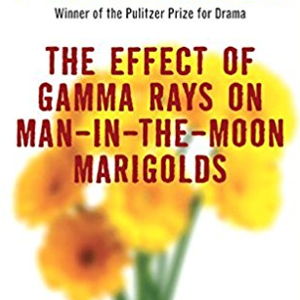
Overview
Synopsis
Paul Zindel’s Pulitzer Prize-winning play, The Effect of Gamma Rays on Man-in-the-Moon Marigolds, opens on the fragile tenacity of a young mind learning how the world works. Tillie, our protagonist, stands alone sharing with the audience the first moments of her discovery of the beauty of atoms in science class. She explains in the words of a poet how their existence proves that she is the same material as stardust, and marvels at the expanse of the universe around her in the way only the most curious minds can observe. As the play opens on the rest of Tillie’s world, however, not everything is as beatific as her love for science. In fact, it may be the only thing tethering her to happiness at all. Her abusive mother, cast into poverty when her husband died and their small vegetable store in a rural, outdated town had to close, spends more of her time bemoaning their circumstances and destructively imagining the perfect way out than she does looking after the elderly tenant who pays her for care. Ruth, Tillie’s older sister, is a rebellious teenager who mimics many of her mother’s troubled coping mechanisms, and devises her own as well. Ruth is recovering from a mental breakdown also linked to a convulsive disorder, and after a stint in a hospital ward following a particularly traumatic experience, her mother and Tillie are determined to prevent the onset of another life-altering ‘fit’.
Amidst this chaos, Tillie exists wide-eyed with wonder in the calm nucleus of her work with the school science teacher. She becomes a finalist in her school science fair for her project, in which she irradiates the seeds of man-in-the-moon marigolds with different levels of cobalt 60 and observes their growth mutations. With this surprise achievement bringing in a flurry of unanticipated attention from the locals, Tillie and Ruth’s clashes with their mother grow ever more ferocious, and Tillie’s attempt at finding her own success may only drive their family further into the sadness it can’t seem to escape. Paul Zindel’s masterpiece ranges from tender to grotesque, stopping at every point in between. Like the radiation that fascinates Tillie, Zindel uses his play to examine the extent of suffering on children who live in poverty without parental figures who can love them well. A survivor of traumatic childhood himself, Zindel knows the toll such a warped upbringing can have. And yet even amidst so much tragedy, Ruth and Tillie live with hope, reaching out for love and opportunity where they can find it. In them we see the true face of hardy, determined children who desperately seek to repair what they cannot, and we are reminded of the often impossible burdens children of dysfunctional homes must bear in their attempts to simply break free and thrive in even the rockiest soil.
Show Information
- Book
- Paul Zindel
- Category
- Play
- Age Guidance
- Thirteen Plus (PG-13)
- Number of Acts
- 2
- First Produced
- 1965
- Genres
- Drama
- Settings
- Unit/Single Set
- Time & Place
- 1960s, rural america
- Cast Size
- small
- Licensor
- Dramatists Play Service
- Ideal For
- All-Female Cast, College/University, Community Theatre, Diverse Cast, Ensemble Cast, High School, Mature Audiences, Professional Theatre, Regional Theatre, Small Cast, Includes Early Teen, Adult, Mature Adult, Late Teen, Elderly Characters
Context
Plot
Characters
| Name | Part Size | Gender | Vocal Part |
|---|---|---|---|
|
Lead |
Female |
|
|
|
Lead |
Female |
|
|
|
Supporting |
Female |
|
|
|
Supporting |
Female |
|
|
|
Supporting |
Female |
|
Songs
A song with an asterisk (*) before the title indicates a dance number; a character listed in a song with an asterisk (*) by the character's name indicates that the character exclusively serves as a dancer in this song, which is sung by other characters.
Monologues
Scenes
Key Terms
Sorry! We do not currently have terms for this guide.
Videos
Quizzes
Themes, Symbols & Motifs
Sorry! We do not currently have learning modules for this guide.
Quote Analysis
Sorry! We do not currently have learning modules for this guide.
